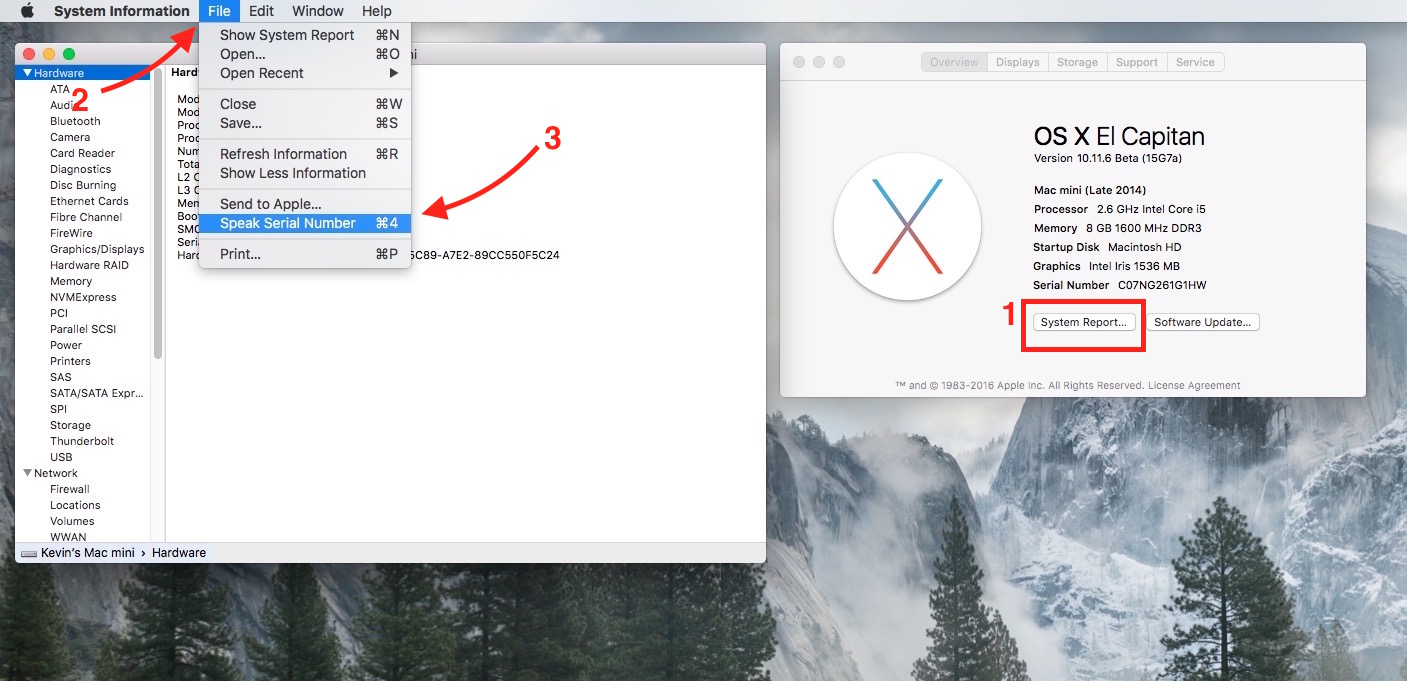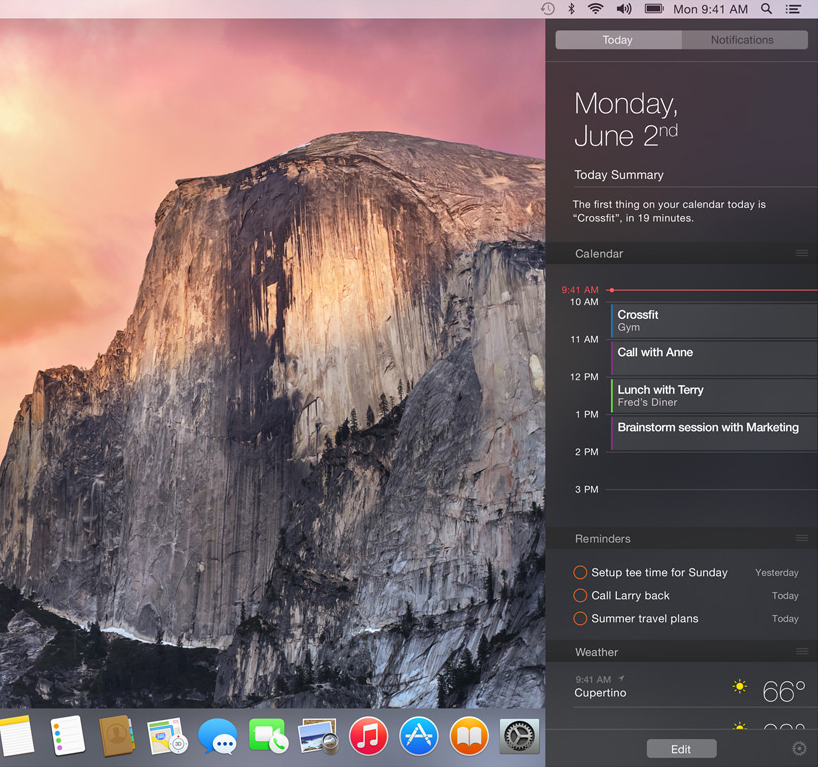Yes, upgrade from OS X El Capitan to macOS Mojave is absolutely possible. Check the below solution to upgrade from El Capitan to directly Mojave without facing any data loss problems.
To upgrade Mac OS X El Capitan to macOS Sierra 10.12, the latest updates from Apple.Inc, Download the macOS Sierra 10.12.1 latest version from Apple App Store. #1.Open Apple App Store then navigate to Featured tab. Find macOS Sierra from right sidebar on app store then click on. I created a USB disk with a bootable El Capitan as per this documentation. Plug-in your USB key on a turned-off computer. Start your Mac, press immediately OPTION (aka ALT) Select the Orange icon (aka a USB stick) labelled El Capitan. If it does not detect it after 10 sec and you only see your hard-drive. Try another USB port and wait 10 sec again. OS X El Capitan (OS X 10.11) offers two installation methods. This guide focuses on the 'clean install' method. When you install El Capitan on your current startup drive with the clean install method, you erase everything on the drive. That includes OS X, your user data, and personal files.
MacOS El Capitan no longer supported by Apple In keeping with Apple's release cycle, macOS 10.11 El Capitan is no longer receiving security updates as of August 2018. El Capitan was replaced by Sierra 10.12, High Sierra 10.13 and the current release, macOS 10.14 Mojave.
:no_upscale()/cdn.vox-cdn.com/uploads/chorus_asset/file/6417857/gs-warriors-real-time-info.0.png)
Step 1: First Check your System Compatibility:-
First and foremost, make sure your Mac is compatible with macOS Mojave. In general, most Macs from 2012 or newer are compatible. Here's a list of Macs that can run macOS Mojave:-
1.1)MacBook (Early 2015 or newer)

1.2)MacBook Air (Mid 2012 or newer)
1.3)MacBook Pro (Mid 2012 or newer)
1.4)Mac mini (Late 2012 or newer)
1.5)iMac (Late 2012 or newer)
1.6)iMac Pro (2017)
1.7)Mac Pro (Late 2013, plus mid-2010 and mid-2012 models with recommended Metal-capable GPU)
Step 2: Take Mac Data Backup
Before downloading any major update to your Mac operating system, it is very important to backup your data. The best way to ensure a smooth transition from an older operating system to Mojave is with Time Machine. If you don't already have a backup plan in place, there are a few options you can check out.
Step 3: Download and install macOS Mojave
Apple has made it very easier to simply download and install Mojave, even if you are running an older operating system. If your Mac is running El Capitan, Sierra, or High Sierra, here's how to download macOS Mojave.
3.1)First, click on the Apple icon in the upper left corner of your screen.
3.2)Click on App Store.
3.3)Click on the Featured.
3.4)Click on macOS Mojave in the Mac App Store.
3.5)Click on Download under the Mojave icon.
3.6)Wait for macOS Mojave to finish downloading.
3.7)Click Install to begin the installation process.
After following the above steps, you will be able to upgrade your operating system from Mac OS X El Capitan to macOS Mojave.
Dec 29, 2018 1:17 AM
To get the latest features and maintain the security, stability, compatibility, and performance of your Mac, it's important to keep your software up to date. Apple recommends that you always use the latest macOS that is compatible with your Mac.
Learn how to upgrade to macOS Big Sur, the latest version of macOS.

Check compatibility
If a macOS installer can't be used on your Mac, the installer will let you know. For example, it might say that it's too old to be opened on this version of macOS, or that your Mac doesn't have enough free storage space for the installation.
To confirm compatibility before downloading, check the minimum requirements for macOS Catalina, Mojave, High Sierra, Sierra, El Capitan, or Yosemite. You can also find compatibility information on the product-ID page for MacBook Pro, MacBook Air, MacBook, iMac, Mac mini, or Mac Pro.
Make a backup
Before installing, it’s a good idea to back up your Mac. Time Machine makes it simple, and other backup methods are also available. Learn how to back up your Mac.
Download macOS
It takes time to download and install macOS, so make sure that you're plugged into AC power and have a reliable internet connection.

Safari uses these links to find the old installers in the App Store. After downloading from the App Store, the installer opens automatically.
- macOS Catalina 10.15 can upgrade Mojave, High Sierra, Sierra, El Capitan, Yosemite, Mavericks
- macOS Mojave 10.14 can upgrade High Sierra, Sierra, El Capitan, Yosemite, Mavericks, Mountain Lion
- macOS High Sierra 10.13 can upgrade Sierra, El Capitan, Yosemite, Mavericks, Mountain Lion
Safari downloads the following older installers as a disk image named InstallOS.dmg or InstallMacOSX.dmg. Open the disk image, then open the .pkg installer inside the disk image. It installs an app named Install [Version Name]. Open that app from your Applications folder to begin installing the operating system.
- macOS Sierra 10.12 can upgrade El Capitan, Yosemite, Mavericks, Mountain Lion, or Lion
- OS X El Capitan 10.11 can upgrade Yosemite, Mavericks, Mountain Lion, Lion, or Snow Leopard
- OS X Yosemite 10.10can upgrade Mavericks, Mountain Lion, Lion, or Snow Leopard
Mac Os X El Capitan Size
Install macOS
Follow the onscreen instructions in the installer. It might be easiest to begin installation in the evening so that it can complete overnight, if needed.
Eziview download. If the installer asks for permission to install a helper tool, enter the administrator name and password that you use to log in to your Mac, then click Add Helper.
Please allow installation to complete without putting your Mac to sleep or closing its lid. Your Mac might restart, show a progress bar, or show a blank screen several times as it installs macOS and related firmware updates.
Learn more
Mac Os X Sierra
You might also be able to use macOS Recovery to reinstall the macOS you're using now, upgrade to the latest compatible macOS, or install the macOS that came with your Mac.
